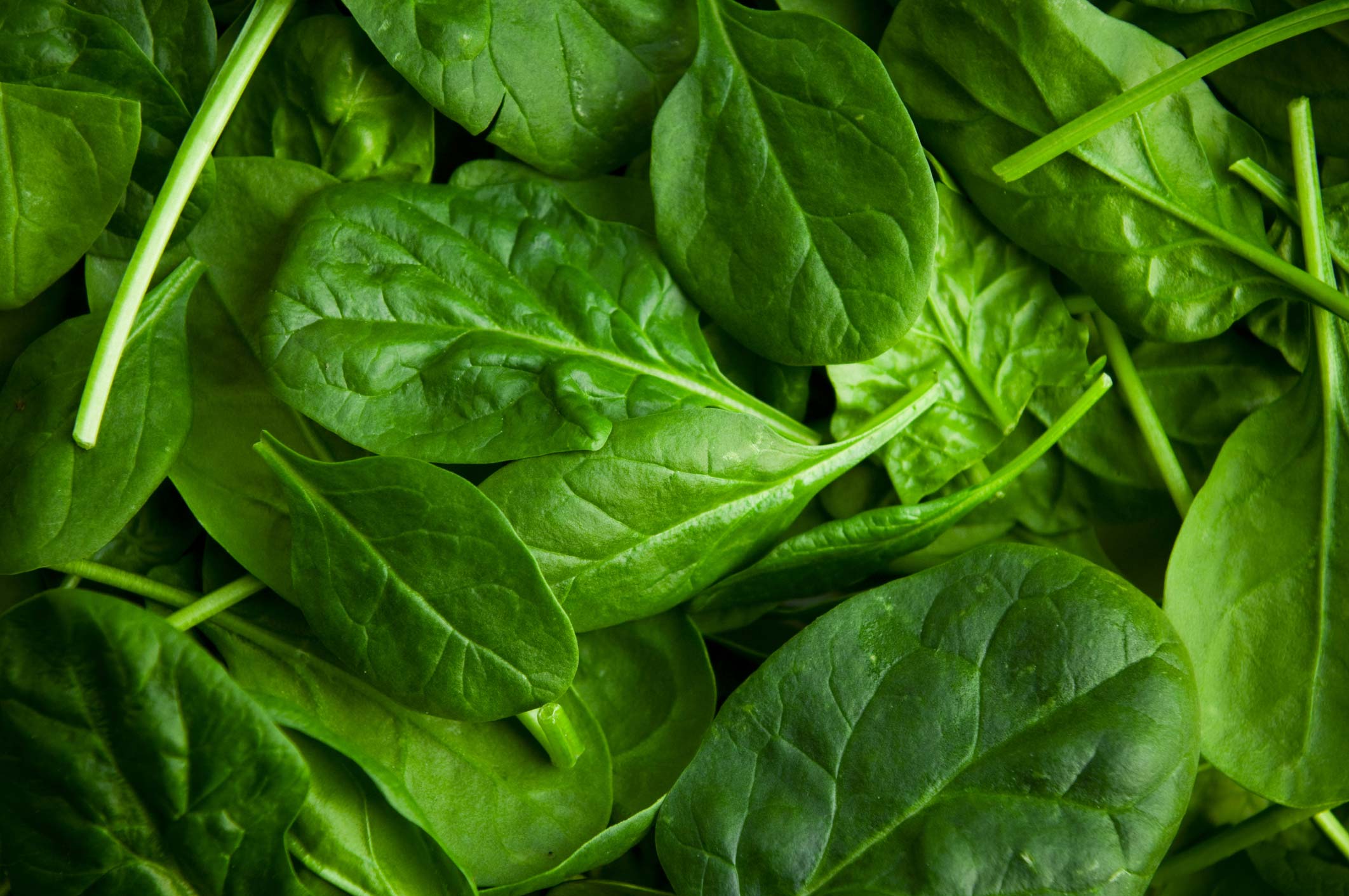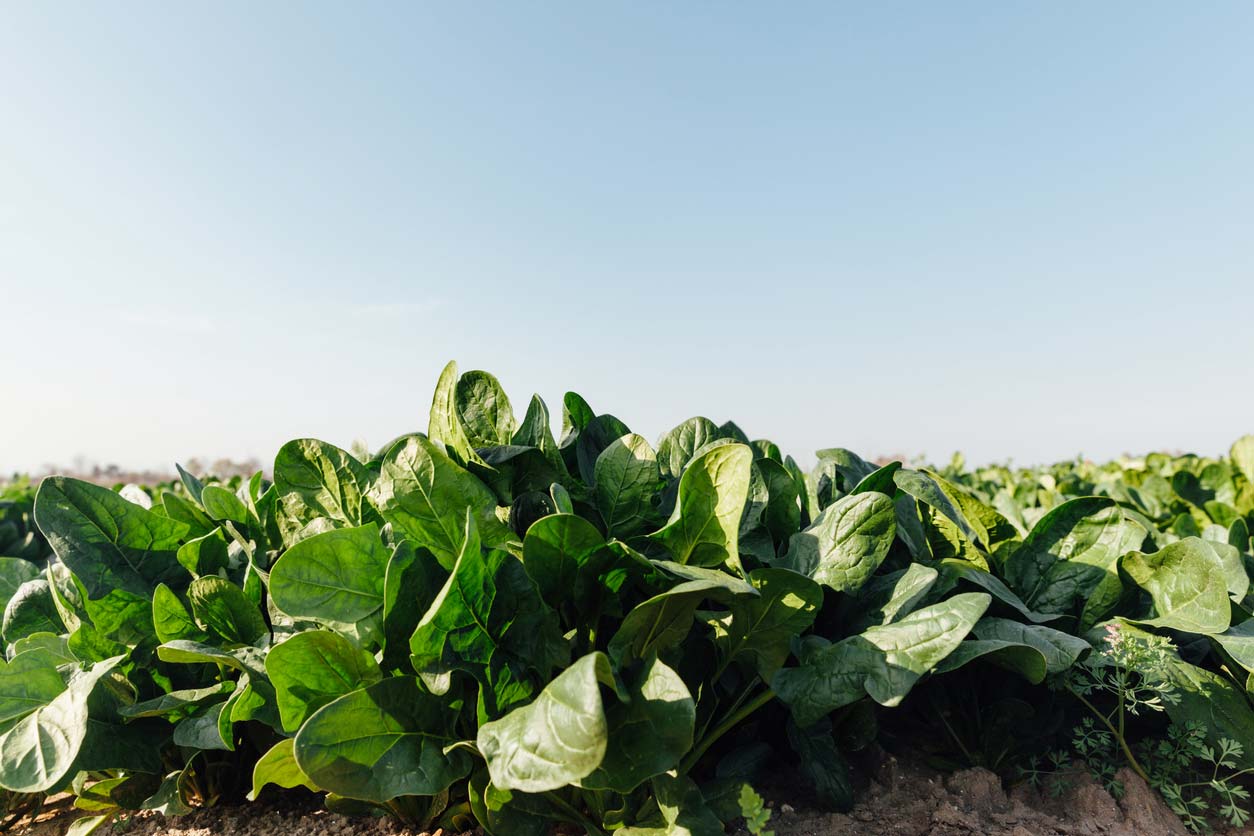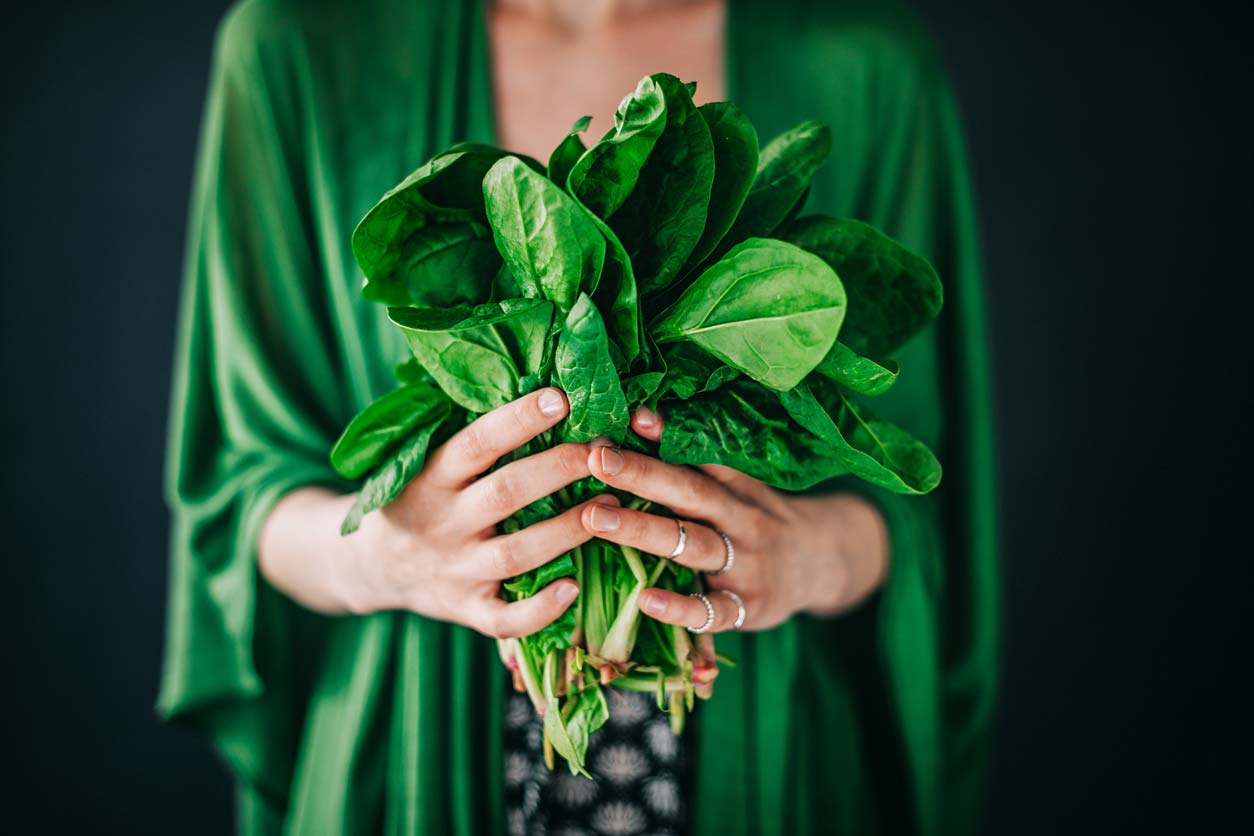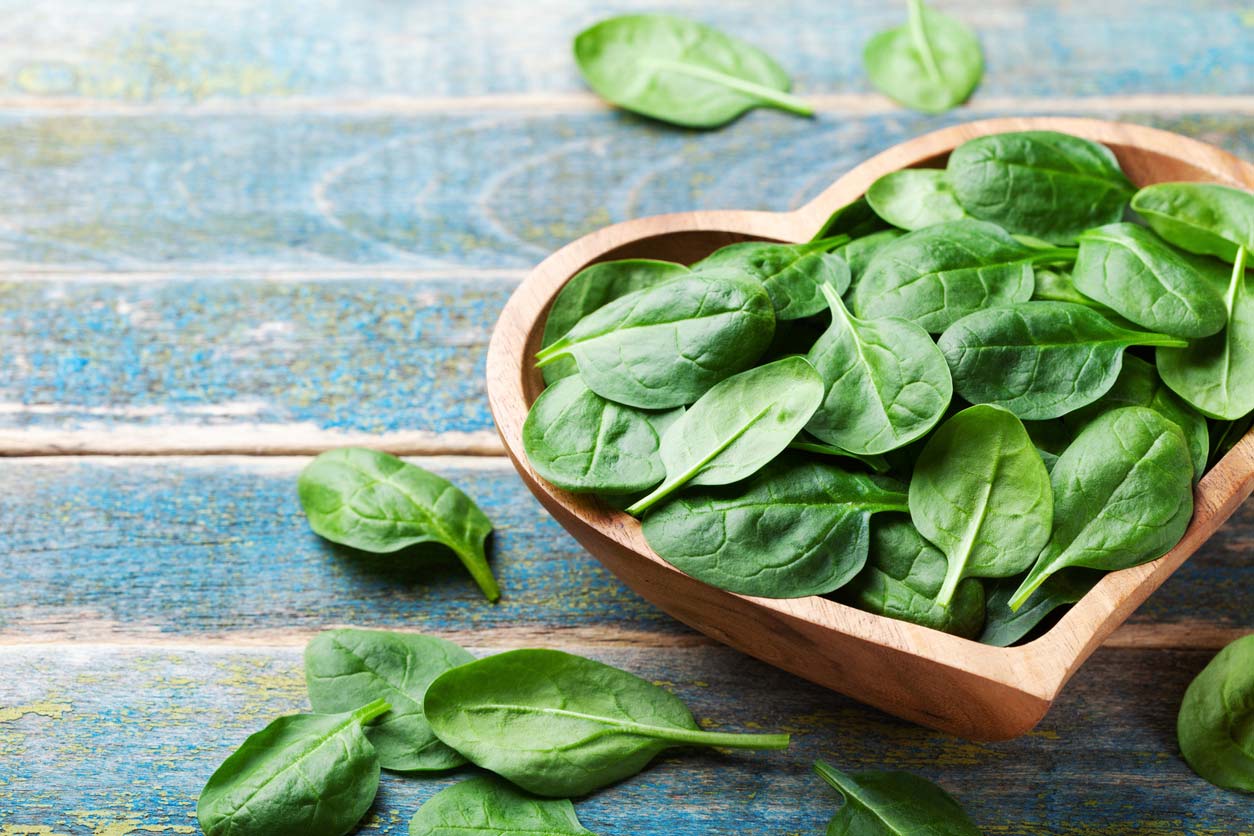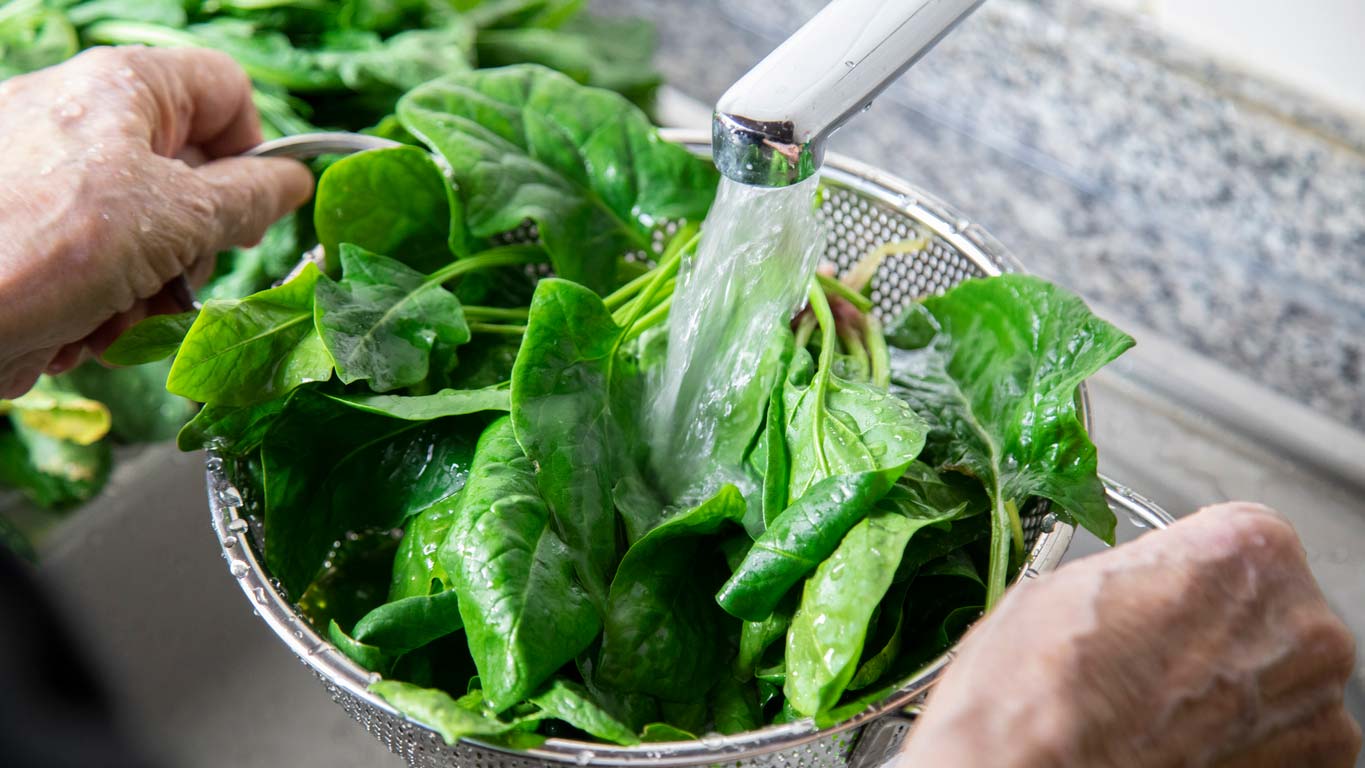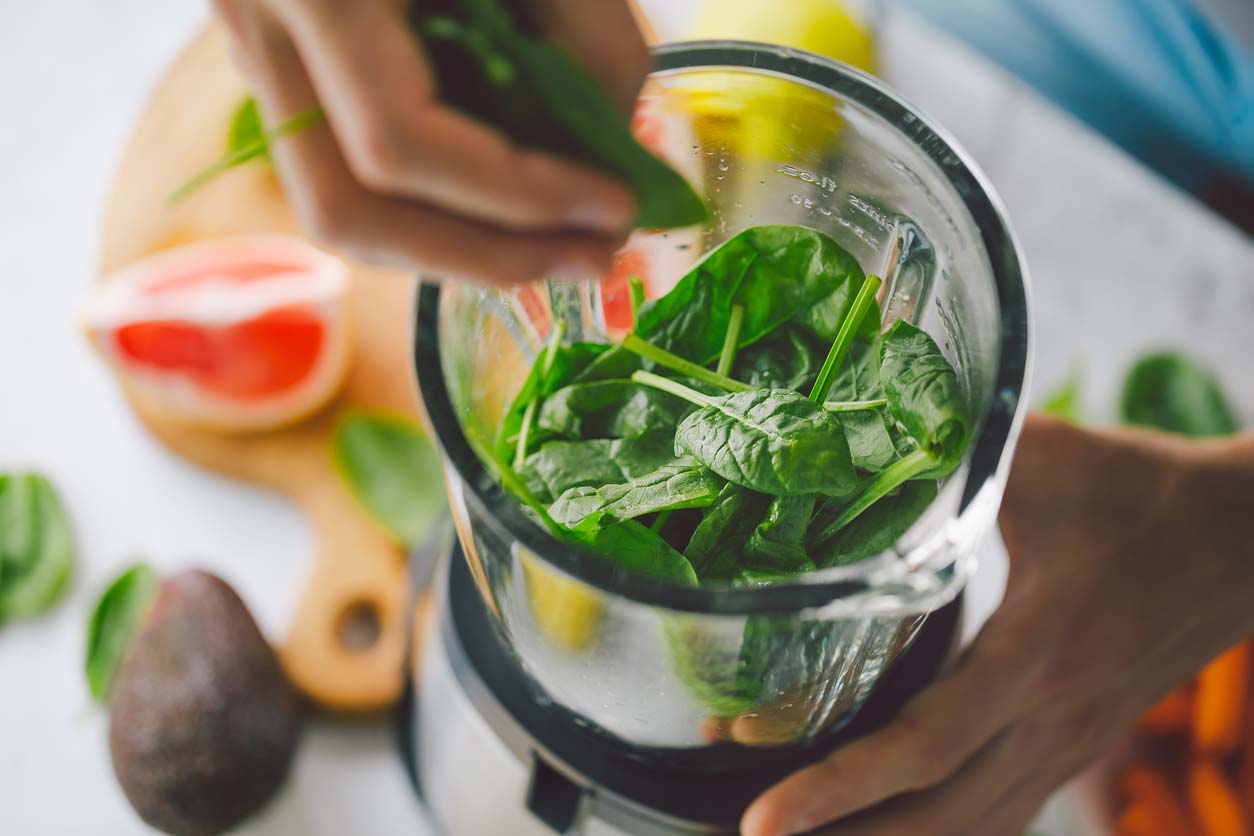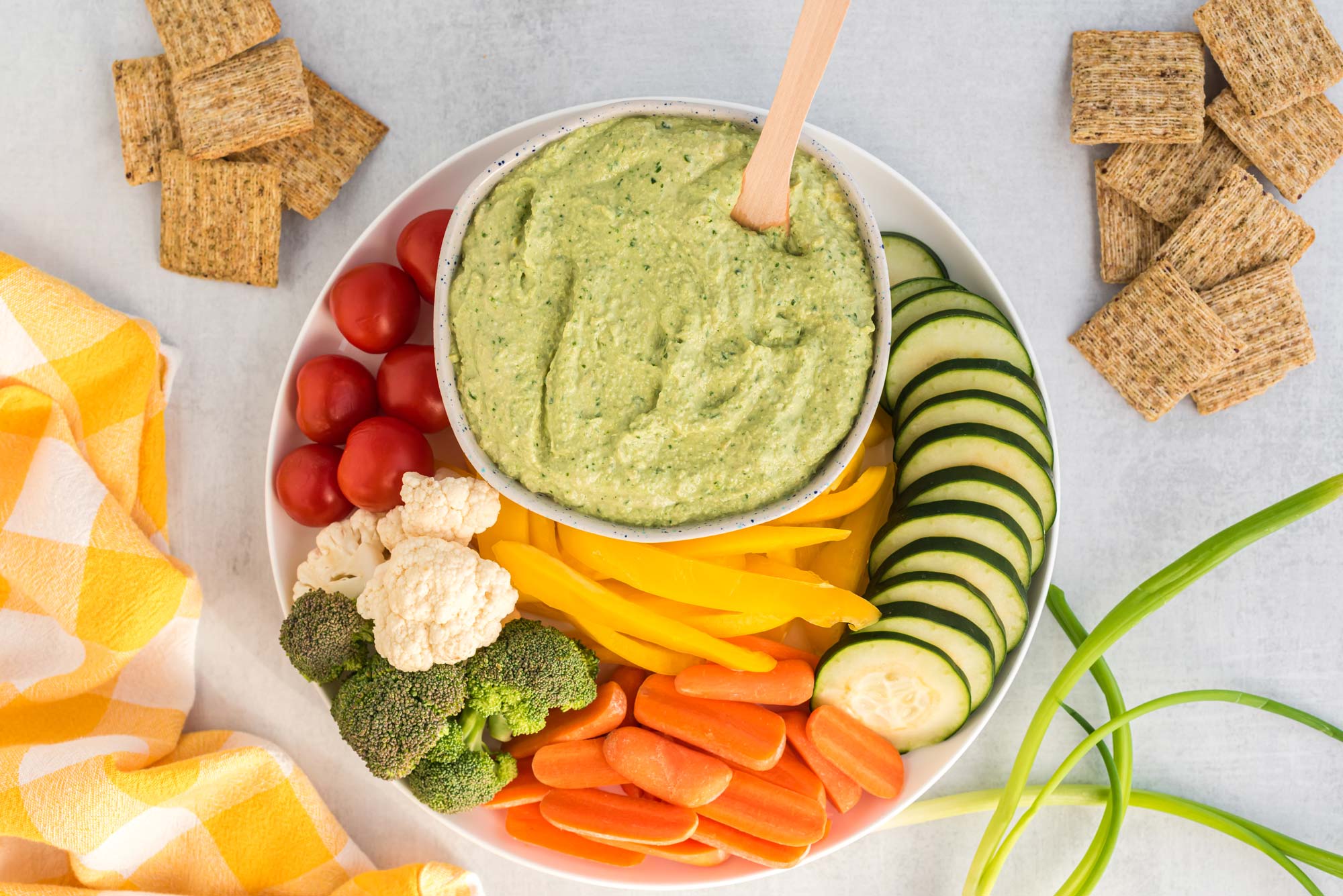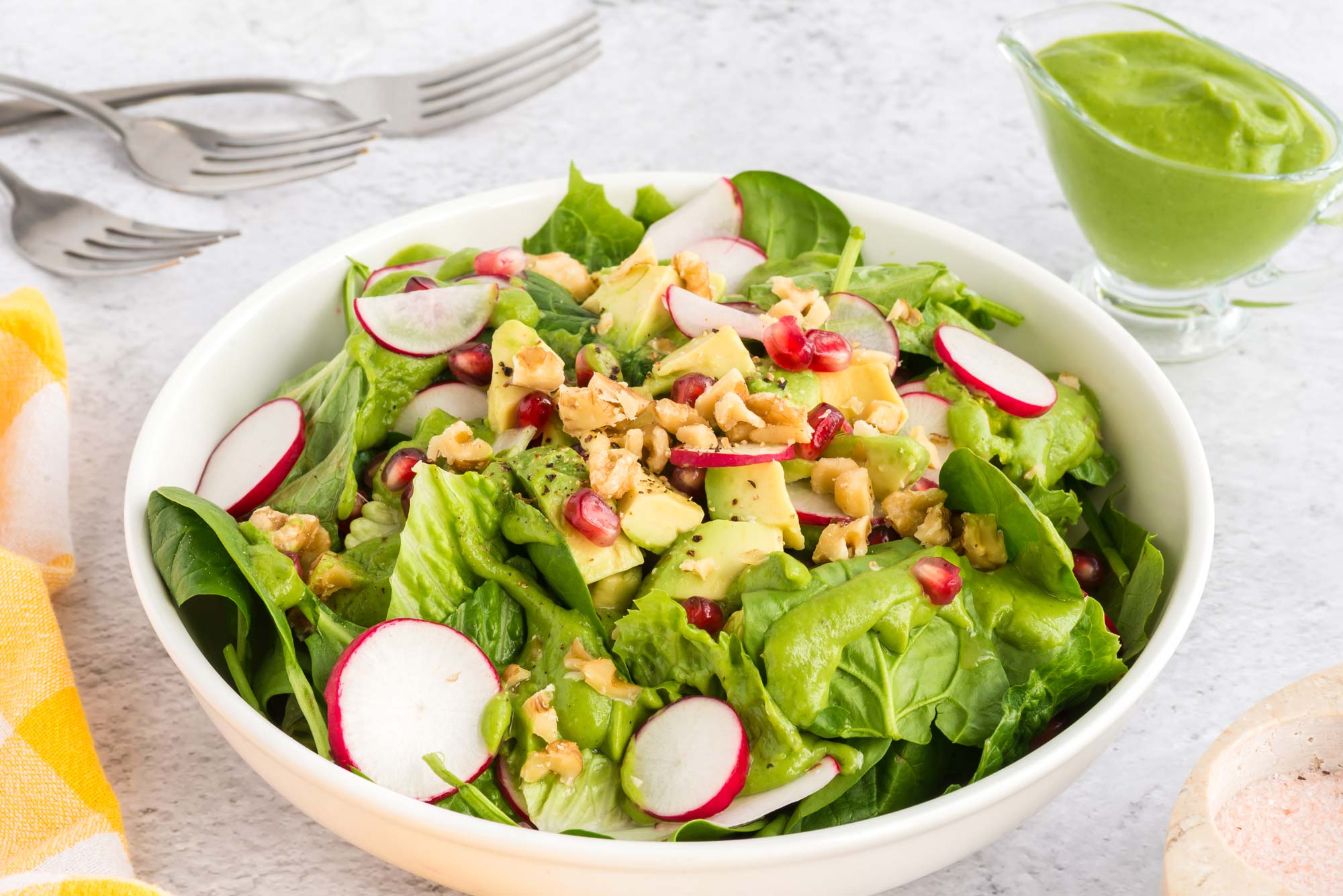A sloppy error committed by a German chemist in 1870 had some ultimately favorable consequences. In fact, it may have been responsible for the makeup of your latest salad.
Erich von Wolf spent part of his career measuring the iron content of various foods: rice, milk, cherries, asparagus, and so on. And spinach. But although he measured accurately, von Wolf might have been a bit tired when he wrote up his results. Instead of 3.5 milligrams of iron per 100 milligrams of food mass, he entered 35 milligrams. Oops.
Three things happened, and one thing didn’t happen. First, spinach immediately got a reputation as a superfood, as if there was no doubt that eating the equivalent of an entire paper clip’s worth of iron was a good thing. Second, that reputation led the creators of the Popeye cartoon to feature spinach as the thing that gave the gravel-voiced sailor his incredible strength. As he reminded his young viewers in every episode, “I’m strong to the finich, ‘cause I eats me spinach.” Third, due in part to the cartoon, US spinach consumption increased by one-third.
And the thing that didn’t happen? Nobody bothered to check von Wolf’s numbers, even though it would have been a relatively simple and straightforward thing to do. It wasn’t until 1937 that researchers noticed and corrected the mistake, at which point spinach’s stellar reputation was impervious to facts.
Spinach is still a widely consumed leafy green, but its popularity has been dropping over the last several years. One reason for the decline may be another misconception about spinach, this one negative: that it contains harmful “antinutrient” compounds known as oxalates (more on that in a minute).
The truth is, spinach isn’t a miraculous superfood that will instantly give you superhuman strength. But its oxalate content doesn’t make it a nutritional villain either.
So what are the health benefits of spinach? And what are the best ways to eat it to reap those benefits?
Where Is Spinach Grown?
Spinach (Spinacia oleracea L.) likely originated in Asia, in what is now Iran. Related to beets and chard, there are records of its cultivation in China in the seventh century and in Europe in the fourteenth century. The Moors, historical inhabitants of Europe and Rome, introduced it to Spain, a fact reflected in our name for the plant (the etymology of “spinach” is from the Spanish word hispanica). Today, four states — California, Arizona, New Jersey, and Texas — grow 98% of the commercial fresh market spinach in the US.
Globally, the US is the second-largest spinach producer, after China. It’s actually not even close, though. Chinese spinach production accounted for 27.5 million tons in 2019, 63x that of the US.
However, you don’t have to import your spinach, or even buy it, as it’s easy to grow in many climate zones. It’s a relatively hardy green that can be planted in very early spring, as well as in fall and even winter in some areas.
Types of Spinach
There are three main types of spinach, including:
1. Flat-leaf or smooth
This type predominates in grocery stores and restaurants in the US. It’s also frequently included in pre-packaged salad mixes, either on its own or mixed with other greens like butter lettuce or arugula. Flat-leaf spinach is sweeter and more tender than other varieties and is delicious both raw or cooked. Some popular varieties of flat-leaf spinach include Space and Red Cardinal.
2. Savoy
This spinach variety has distinctive wrinkly leaves that are usually around five to six inches long. Raw, it’s somewhat bitter, so you may want to cook it. Some popular varieties of savoy spinach are Regiment or Bloomsdale.
3. Semi-Savoy
Semi-savoy spinach isn’t as crinkly as savoy but does still have an uneven texture and edges. This makes it easier to clean before eating. Semi-savoy has the same flavor characteristics as savoy, so it’s probably best to cook this one as well. Some popular varieties of semi-savoy spinach include Tyee, Catalina, and Teton.
Spinach Nutrition
While spinach may not be the iron powerhouse von Wolf’s wandering decimal point suggested, it still has a lot to offer nutritionally. And you don’t have to gulp down a full can of spinach like Popeye did to reap those benefits.
Spinach contains at least 20 different nutrients. It’s extremely high in antioxidants, containing 13 flavonoids, which are compounds responsible for many of a plant’s health benefits.
Just one cup (30 grams) of raw spinach contains more than the recommended daily doses of vitamins K1 and A, manganese, and folic acid. It will also contribute around 40% of your daily magnesium needs. Plus, spinach is a great source of potassium, iron (even at 1/10th its previously advertised concentration!), and vitamin C. It’s also a surprisingly decent source of protein.
Health Benefits of Spinach
The nutrients and potent plant compounds in spinach make it one of the healthiest foods on the planet. Below are some of the known health benefits of making spinach a regular part of your diet.
1. May have anticancer effects
Some epidemiological studies have observed a protective role of spinach consumption when it comes to cancers of the breast, colon, and esophagus. In one study, which included 6,888 cases and 9,428 controls, women who ate at least two servings of spinach per week had a 45% lower risk for breast cancer. (Carrots had the same effect, in case you prefer orange to green.) Some of the anticancer effects of spinach may come from its lutein content, a type of carotenoid that provides a yellow pigment to plants.
In case you’re wondering why spinach isn’t yellow, consider this lesson from Kindergarten: Yellow and blue combine to make green. Which does make me wonder — if spinach didn’t have so much lutein, would it be blue? We may never know. But what we do know is that regular inclusion of spinach in your diet may be cancer-preventive.
2. May improve metabolic syndrome
Metabolic syndrome refers to a cluster of conditions that raise your risk for chronic diseases like heart disease, cancer, and type 2 diabetes. Some of these conditions include high blood pressure and blood lipids, abdominal obesity, and poor blood sugar management. Eating spinach may help prevent some or all of these conditions.
A combination of regularly consuming spinach and practicing aerobic exercise was observed to offer the best improvement in metabolic syndrome markers in one animal study.
In another animal study, spinach consumption improved insulin resistance, high cholesterol, high triglycerides, and endothelial function. Some of this benefit may come from the dietary nitrates found in spinach. Nitrates convert to nitric oxide in the body which is a gas that dilates arteries and improves circulation which in turn improves heart health.
And in a 2021 case-control study published in the journal BMC Gastroenterology, researchers analyzed 225 patients who had been diagnosed with non-alcoholic fatty liver disease (NAFLD), a condition closely linked with metabolic syndrome, and 450 controls. Researchers found a significant inverse correlation between the consumption of spinach and rates of NAFLD. The more spinach (including both raw and cooked) that the study participants ate, the lower their odds of suffering from NAFLD.
3. May help boost your mood
Some people may find that consuming spinach makes them happy. One telltale sign is declaring loudly, publicly, and repeatedly, “I yam what I yam.” It’s not just in their heads, though; there’s solid scientific evidence that spinach is good for our brains and may actually help boost mood.
In one 2018 study, researchers examined the mental health effects of eating raw versus cooked or canned fruits and vegetables on young adults. They found that eating raw, unprocessed produce predicted significantly better mental health outcomes compared to cooked or canned produce. Spinach was among their top 10 fruits and veggies, which were most strongly related to mental health.
Another 2018 study among mice went as far as to suggest that spinach specifically offers anti-stress and antidepressant properties. The researchers observed that frozen spinach powder extract increased glutamate and glutamine levels in the prefrontal cortex of the brain. Low levels of these two compounds often appear among people with depression.
4. May be good for your brain
In addition to boosting your mood, eating spinach and other leafy greens may have other beneficial effects on your brain.
In a 2018 study published in Neurology, researchers found that green leafy vegetables (including spinach, kale, collards, and lettuce) were positively — and significantly — associated with slower cognitive decline in dementia-free older adults (average age of 81). Even better, these benefits appeared with just one single serving of leafy greens per day. But what’s most impressive? The rate of cognitive decline among those who consumed the most greens, compared to those who consumed the least, was the equivalent of being 11 years younger.
5. May increase your strength and athletic performance
Spinach contains a phytosteroid called ecdysterone, which may be responsible for some of its strength benefits. In a 2019 comparative study, researchers concluded that the performance effects of this naturally occurring steroid hormone were so significant that ecdysterone could warrant an addition to the list of prohibited substances for sports, along with other anabolic agents. Good thing that Popeye lyricist Sammy Lerner didn’t know this — “I’m strong to the finich ‘cause I get my ecdysterone” just isn’t as catchy as the original.
The nitrates found in spinach may offer other strength benefits, too. A Swedish study found that adding nitrate to the drinking water of mice for one week resulted in much stronger muscles, compared to those of mice that didn’t get nitrates.
6. May help support eye health
Spinach contains the antioxidant-rich carotenoids lutein and zeaxanthin. These compounds provide pigment to plants and are also responsible for many of their health benefits, particularly to your eyes. Lutein and zeaxanthin have been extensively studied for their association with a reduced risk for cataracts and age-related macular degeneration, a condition that may, over time, result in blurred eyesight or blindness.
According to a 2016 pilot study, consistent intake of lutein-rich spinach increased macular pigment optical density, visual acuity, and blood levels of lutein. The 11 healthy participants consumed 75 grams (approximately ⅓ cup) of frozen spinach containing 10 mg of lutein every day for 2 months.
Potential Spinach Health Risks
Despite its numerous health benefits, spinach does also come with a few potential downsides to consider. While some populations may want to avoid large amounts of spinach in their diet, for most people its benefits far outweigh its risks, which are discussed below.
Contains Oxalates
First, spinach contains oxalates. Oxalates, or oxalic acid, bind to minerals like iron and calcium, making them less bioavailable for your body to use.
And spinach does contain a higher concentration of oxalates than most other plant foods. Just a half-cup of cooked spinach contains around 755 mg of oxalic acid, though most of this is excreted from your body through urine.
While oxalic acid doesn’t pose a risk for most people at the levels in which they’re normally consumed, there are some concerns that they may increase the risk of kidney stones in people prone to them. Healthcare providers will sometimes prescribe a low-oxalate diet to people with this susceptibility. Adhering to such a diet generally means eating less than 100 mg of oxalic acid per day, which means no spinach (or beet greens or Swiss chard). When this diet is prescribed, it’s usually out of an abundance of caution because the role of dietary oxalates and kidney stone formation is inconclusive.
Oxalates may also pose concerns for people who have a history of frequent antibiotic use. This is because some of the oxalates you eat are broken down by bacteria in the gut. But some people may lack those bacteria due to antibiotic overuse, and therefore may benefit from a lower-oxalate diet.
However, oxalates are not evil. In fact, they are present in almost every food we eat, to some degree. But some foods like peanuts, rhubarb, spinach, beets, Swiss chard, chocolate, and sweet potatoes contain more than others.
The bottom line? Spinach is a highly nutritious food. If you have concerns about your iron or calcium levels and don’t eat a lot of other sources of these nutrients, or if you are prone to kidney stones, you may want to moderate your spinach consumption. But eating a well-balanced diet can give you more of the minerals that may otherwise be inhibited by oxalates.
Interference with Medications
Spinach contains large amounts of vitamin K1, in both its raw and cooked forms. Vitamin K1 is known to support natural blood clotting and to prevent excessive bleeding. Getting enough is also important for the strength of your teeth and bones, helping to regulate calcium balance and reduce the risk for fractures.
On the other hand, too much vitamin K1 can reduce the effectiveness of blood thinners like Warfarin. If you’re on Warfarin, or a similar medication, there’s probably no need to completely avoid spinach. Rather, maintaining a consistent intake of spinach and other sources of vitamin K1 can help keep blood levels of this nutrient even. And, of course, this could be a good thing to discuss with your healthcare provider.
May Contain Pesticides
Spinach remains on the Environmental Working Group’s Dirty Dozen list, where it’s listed as the second most pesticide-contaminated produce item when grown conventionally. To help minimize your consumption of pesticides, choose organically grown spinach whenever possible.
How to Choose & Store Spinach
So perhaps you’ve put spinach on your grocery list. If so, great! Follow these few tips for buying and storing success.
- Choose spinach bunches with vibrant green leaves, and avoid spinach that has yellowed leaves as this is indicative of a loss of nutrients.
- Avoid wilted or slimy spinach that shows the process of degradation has begun, and which will spread to the remaining leaves and give the spinach a very short shelf life.
- Choose fresh spinach over bagged if possible, as bagged leafy greens can get soggy. They also have more contact with plastic.
- If fresh spinach isn’t available or you prefer a longer-lasting option, go for frozen spinach. Frozen produce is picked fresh and the freezing process keeps most of its nutrients intact.
- Canned spinach is also an economical option. But if you buy canned spinach, choose some in a BPA-free can. (And don’t squeeze the sides to open it; use a can opener.)
When you get home, store fresh spinach in the refrigerator, in produce bags, or in airtight containers. Don’t wash your spinach until you’re ready to eat it, as washing it too early creates a moisture-rich environment that can promote bacterial growth and premature wilting. If you buy fresh spinach that’s not organic, wash it with water and a bit of baking soda when you’re ready to use it. This combination has been shown to be more effective for removing pesticides on the surface of produce than water alone or even commercial produce cleaners. (For our article on how to wash produce to remove pesticide contamination, click here.)
How to Use Spinach
Now for the part you’ve been waiting for — what are some of the best ways to use the delicious spinach you just brought home, pulled out of the freezer, or picked from your garden?
Many people enjoy spinach raw. It can be used as a foundation for salads, incorporated into dips (like the spinach and artichoke one below), blended into smoothies and homemade juices, or mixed into soups, stews, and curries.
As for cooked spinach, it’s delicious in pasta dishes, sauteed with garlic as a side to just about anything, incorporated into stir-fries and breakfast scrambles, and mixed into soups, stews, and curries. To cook spinach, you can boil and drain it, saute it with a bit of water or vegetable broth, steam it in a steaming basket, or even microwave it. Be aware that spinach is mostly water, so that giant bunch of fresh greens may end up as a quarter cup if cooked. But don’t be sad — all the good stuff is still there; it’s just concentrated.
Research has shown that there’s less loss of the water-soluble B and C vitamins when spinach is steamed or microwaved than when boiled. Cooking spinach can also make spinach more nutrient-rich, resulting in certain minerals becoming more bioavailable than when it was raw.
Spinach-licious Recipes
The recipes below provide just a small taste (literally!) of spinach’s diversity. Blend it to make an ooey-gooey tasty appetizer with the Spinach Artichoke Dip. Entice your kids (or grandkids) to love their spinach by getting them to help you in the kitchen to make the “Superhero Dressing” (with spinach as the star ingredient, of course!) that drizzles on top of the Spinach Jeweled Salad. Or, if you want to be super sneaky, make the “Cheesy” Spinach Lasagna, which is (almost) guaranteed to please even the pickiest eaters.
1. Spinach Artichoke Dip
Something magical happens when you blend spinach with artichokes and cashews — they come together to create an ooey, gooey sea of deliciousness packed with nutrients like vitamin K, iron, magnesium, and zinc. This seemingly indulgent dish is also very simple to prepare. Enjoy it as a veggie dip, spread it on a sandwich, or layer it with potatoes then bake as a casserole.
2. Spinach Jeweled Salad
If you want to become a real-life superhero, we have just the salad for you. Or, maybe you’re past the superhero phase, but have kids who refuse to eat their greens — entice them with the salad’s Superhero Dressing made with spinach and avocado! There are so many essential nutrients that are packed into this gem of a meal including vitamin E, vitamin C, carotenoids, fiber, and much much more thanks to the spinach, avocado, nuts, seeds, pomegranate, and radishes. Enjoy it often!
3. Cheesy Spinach Lasagna
Including greens in your daily diet can sometimes be a challenge, and if you have “greens-avoidant” kids, that’s a whole other level of difficulty. Enter “Cheesy” Spinach Lasagna — the meal to end all leafy green challenges. This family-friendly meal will most likely satisfy even the pickiest of eaters and may even knock the socks off of some. Feel good knowing that you’re feeding your family a meal filled with nutrient-packed, plant-based ingredients for optimal health and well-being.
Eat Your Spinach, Be Strong to the Finish
Even though he wasn’t on the leading edge of scientific research, it turns out that Popeye had it right all along — spinach is good for you and can make you strong. Plus, it has a number of other health benefits. Although there may be some concerns with eating spinach, for most people, it can be safely included as part of a healthy, balanced diet. Whether you go with fresh, frozen, or canned, aim to purchase (or grow) organic if you can to avoid pesticides. Spinach is a versatile green that deserves your consideration for its excellent nutritional value and year-round availability in much of the world.
Tell us in the comments:
- What are some of your favorite ways to prepare and enjoy spinach?
- If you haven’t been a spinach fan previously, will you try eating more now?
- What other leafy greens do you like?
Feature image: iStock.com/Kativ
